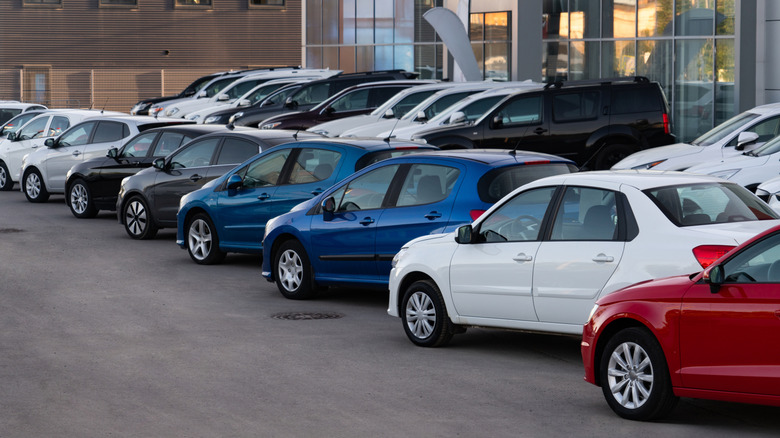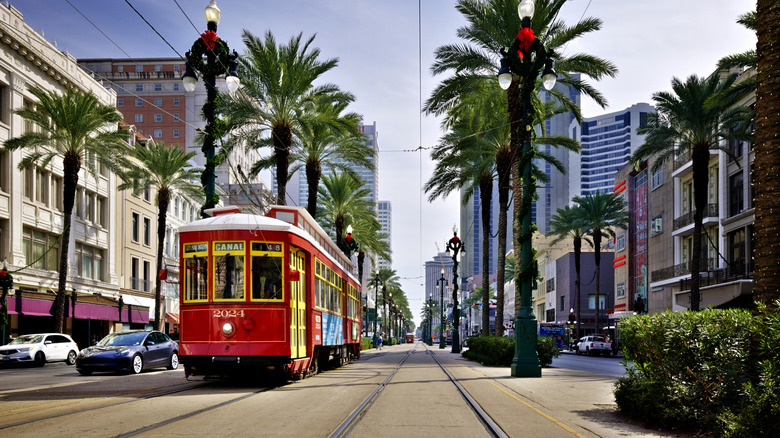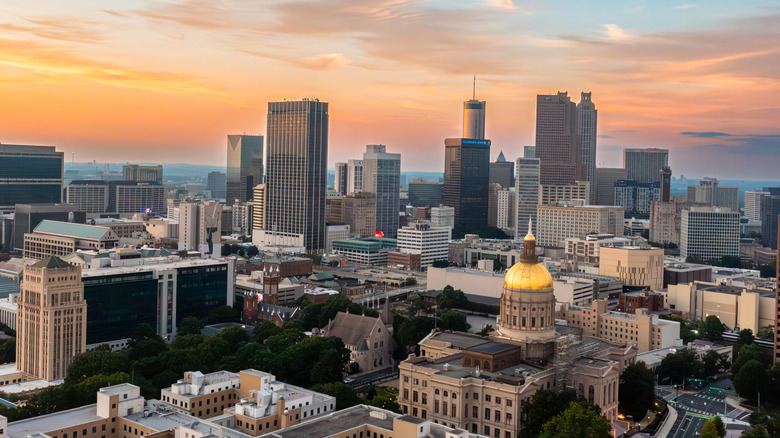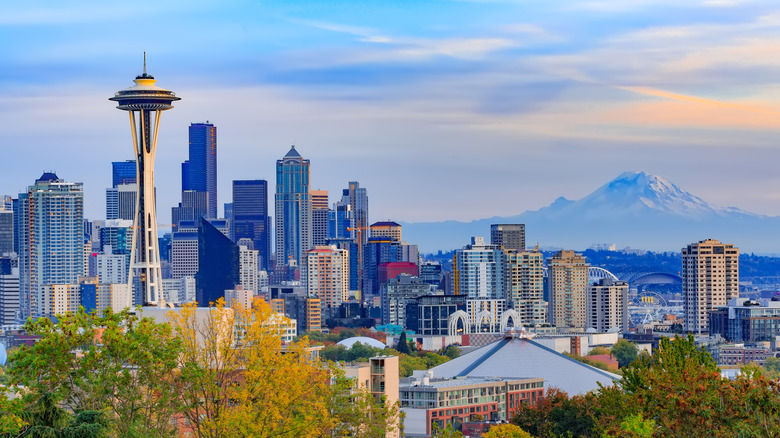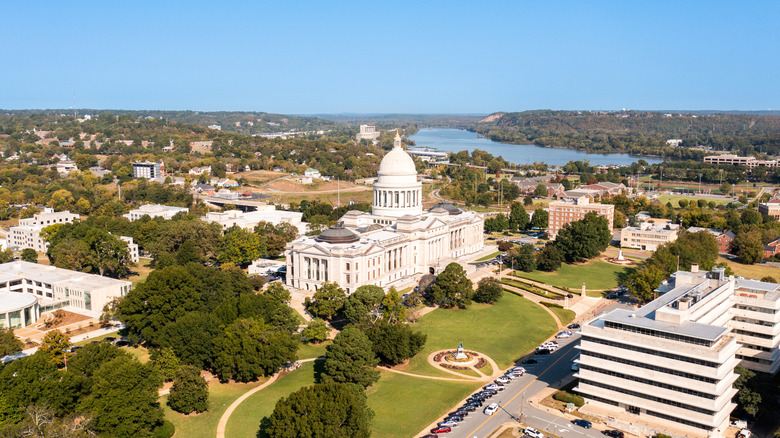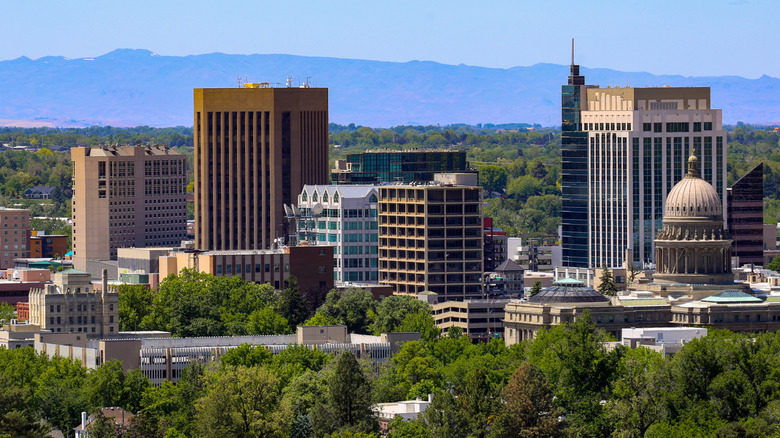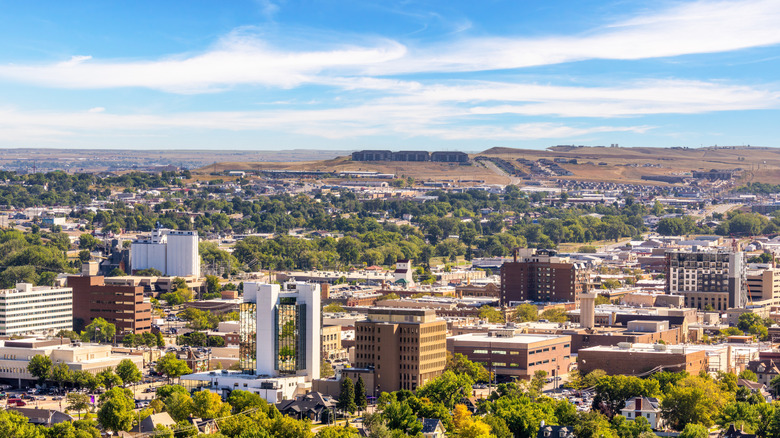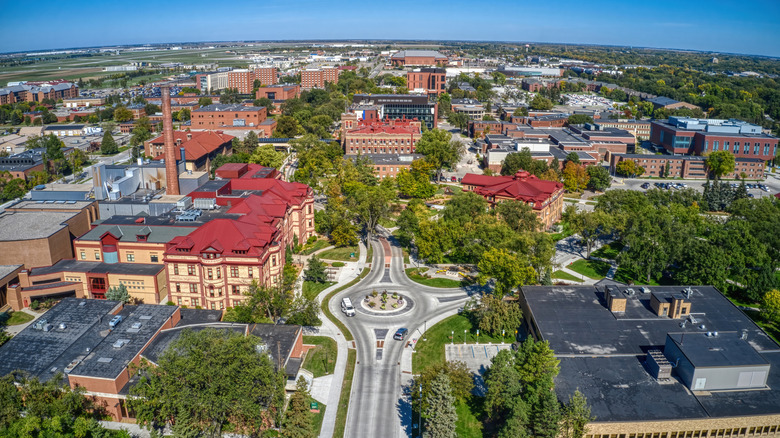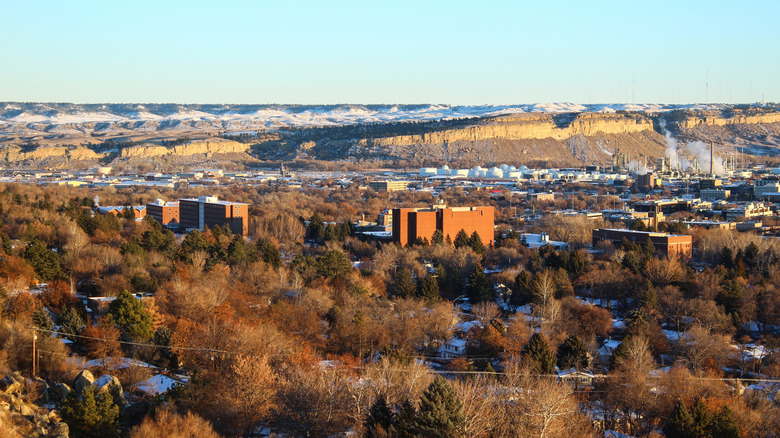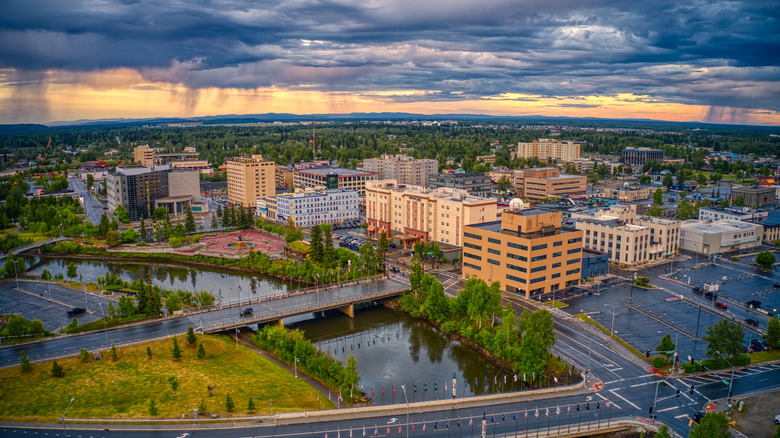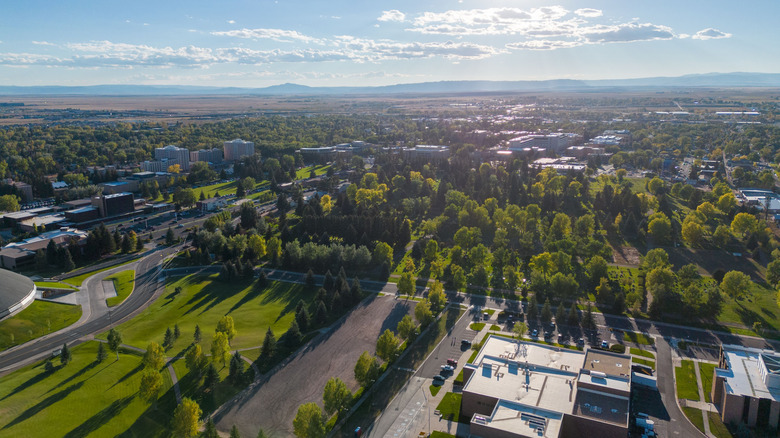10 Of The Most Expensive States To Buy A Used Car In America
Used car prices might not be skyrocketing the way they were in the early days of the pandemic, but if you've been car shopping lately, you've probably noticed that things still aren't that cheap. As of 2025, the national average price for a used vehicle hovers just below $25,000. In some states, it's far higher. Whether you're scouring dealership lots or scrolling online listings, where you live can make a pretty serious difference in how much you'll end up paying.
Over the past few years, used car prices have been fluctuating. This can be attributed to supply chain disruptions, limited new car inventory, and inflation pushing prices to record highs. Things have cooled slightly, but seasonal trends like the typical spring spike in demand and lingering supply issues, along with uncertainty over import tariffs, are keeping costs elevated. According to the Manheim Used Vehicle Value Index, used car prices are still up nearly 4.4% year-over-year.
But price tags aren't the only concern. Dealer fees can sneakily increase your final cost, especially in states like Florida, where they can top $2,000. Then there's insurance — another area where your zip code matters. Rates have surged across the country, with some states even seeing double-digit increases.
A mix of factors makes used car costs in one state higher than in another. These include geography, demand for trucks or SUVs, weather conditions, and the number of dealerships. When it comes to individual cars, value is driven by mileage, maintenance history, accident records, and whether they have the bells and whistles.
To make things more definitive, we dug into the latest data to find the 10 most expensive states to buy a used car in 2025, and what makes them stand out.
Louisiana
Louisiana might have a reputation for spicy food and vibrant culture, but it's also starting to gain one for higher used car prices. In 2025, the average in the state is around $35,893, putting it in the top 10 most expensive places in the country for pre-owned vehicles.
So what's driving up the price? For one, Louisiana has some of the highest insurance premiums in the United States, often topping $2,500 per year, depending on your location and whether or not it's full coverage. Add in dealer fees that can average over $600, and you're looking at a steep total cost to operate a car even before you drive off the lot.
Like many southern states, Louisiana favors trucks, crossovers, and SUVs. This makes sense considering those are the models that can handle long highway hauls, flood-prone streets, and hurricane season in general. That means vehicles like the formerly best-selling Ford F-150, Chevy Tahoe, and Toyota Highlander are in high demand. Those with four-wheel drive and lower mileage fetch especially high prices, while compact sedans and older vehicles with spotty service records don't move quite as fast.
Inventory is another issue. Outside of New Orleans and Baton Rouge, options can be slim, and rural buyers often have to travel or settle for what's available. With fewer cars on the market and strong buyer demand, prices stay high, and dealers have little reason to budge. Buying used in Louisiana means navigating a market shaped by weather, geography, and steep insurance rates.
Georgia
Georgia's charm comes with a steep price tag for used cars in 2025. The average is about $36,016, placing the Peach State firmly among the most expensive in the country.
Atlanta is a major contributor to these numbers. As one of the fastest-growing metro areas in the United States, Atlanta drives up statewide demand for vehicles, especially compact SUVs and crossovers, which are favored by commuters navigating both city streets and suburban neighborhoods. Brands like Toyota, Honda, and Hyundai dominate used lots, but prices for late-model RAV4s, often considered one of the best used cars for new drivers, CR-Vs, and Tucsons have gone up compared to last year, thanks to limited supply and persistent buyer interest.
Meanwhile, insurance rates in Georgia have quietly crept higher over the past year, adding another layer of cost for prospective buyers. While not the most expensive in the country, insurance in the state still averages over $2,800 per year for full coverage, and rates can vary wildly based on your zip code. Toss in dealership fees that can approach $800 in some counties, and suddenly that great deal doesn't feel so budget-friendly anymore.
Inventory constraints also play a big role. Like many southern states, Georgia is still recovering from supply chain bottlenecks that slowed down new car production. With fewer new cars entering the market, used cars are in higher demand. For Georgia buyers, patience and preparation are key to getting the best price possible, and those rules apply whether you're in Savannah, Macon, or metro Atlanta.
Washington
Washington is a state where people love their cars and pay a premium to keep them. In 2025, the average used car in Washington will set you back about $36,119, firmly placing it among the most expensive states in the country for the market.
Demand is arguably the biggest culprit. Washington has a thriving car culture, and with its mix of urban, suburban, and mountainous terrain, residents look mostly for versatile vehicles that can do it all. That means compact SUVs, crossovers, and electrified models are highly sought after. Used Subarus, Toyotas, and increasingly, Teslas, are commanding buyer attention thanks to the state's focus on outdoor adventure and clean energy. In fact, EV resale values in the Pacific Northwest are among the strongest in the country, and Western states, in general, are experiencing higher prices to operate a car this year.
But it's not just demand contributing to high used car prices. Washington's high cost of living spills over into the car market. Dealer fees, while not as notorious as Florida's, can also still add hundreds in closing costs. Then there's insurance — not the highest in the country, but far from the cheapest, with average premiums pushing $1,910 annually and climbing faster in densely populated areas.
Additionally, Washington's strict emissions regulations and eco-friendly policies can restrict the flow of certain used vehicles into the state, thereby limiting inventory and further inflating prices. Pair that with fewer incentives for gas-powered trade-ins, and shoppers are often left choosing between expensive and even more expensive.
Used car hunters in Washington, especially those looking for a practical AWD or hybrid setup, can expect stiff competition, elevated prices, and scenic test drives.
Arkansas
While Arkansas may be known for its low cost of living, it doesn't extend to the used car market. The average price for a used car in the Natural State clocks in at $36,343, surprisingly high for a state that consistently ranks as one of the most affordable.
So, what gives? A big factor has been a lack of inventory. Rural states like Arkansas often rely on fewer dealerships spread across longer distances. That means less competition and fewer choices, which gives sellers the advantage. Used trucks and SUVs, staples in Arkansas for work, hunting, and rougher rural terrain, are in especially high demand, and their prices reflect it. Models like the Ford F-150, Chevrolet Silverado, and Toyota Tacoma are still bringing in top dollar, especially with low mileage and 4WD.
Arkansas doesn't hit shoppers quite as hard on dealer fees, but the lack of statewide regulation means fees can still vary wildly depending on where you buy. Some dealerships tack on several hundred dollars in documentation or processing fees, which can push an already pricey used vehicle even further out of budget.
Insurance costs are mixed. They're not the worst in the country, but they're on the rise, particularly in areas prone to extreme weather or high accident rates. Plus, with fewer public transit options, owning a car is practically a necessity, and dealers know that. In Arkansas, the sticker shock might surprise you. Despite its reputation for affordability, used car shoppers here might need to be more flexible with their price range.
Idaho
Idaho might not be the first state that comes to mind when you think of sky-high car prices, but the used car market here is no joke in 2025. The average price for a used vehicle is $37,092, making Idaho one of the priciest places on our list.
Growth is part of the reason. Idaho has seen a massive population surge over the last few years, thanks in part to an influx of remote workers and retirees seeking lower taxes, outdoor access, and more space. That sudden jump in demand has put a strain on everything, including the used car market. More buyers chasing fewer cars? Prices go up.
Another factor is the Idaho lifestyle itself. This is pickup truck and SUV country, and those vehicles aren't cheap. High-demand models like the Toyota 4Runner, Ram 1500, and Subaru Outback regularly command steep prices thanks to their durability and all-terrain capabilities, which are a must in Idaho's diverse terrain and snowy winters.
And while Idaho doesn't have the highest insurance premiums or dealer fees in the nation, those costs are trending upward. Certain rural areas have limited dealership options, which can limit your negotiating power. Plus, ongoing new car shortages mean many buyers who might've gone for a fresh-off-the-line vehicle are settling for used but paying more to do it.
In short, if you're looking to buy used in Idaho, be ready to compete. Demand is high, inventory is tight, and outdoor-ready vehicles are practically gold.
South Dakota
Don't let South Dakota's wide-open spaces and modest lifestyle fool you. When it comes to buying a used car, it's considerably pricey. As of 2025, the average cost for a pre-owned vehicle hovers around $37,192, about $12,000 more than the national average. That's a big number for a state where life generally moves at a slower (and more affordable) pace.
Inventory is a big issue in South Dakota. With a lower population and fewer major metro areas, it simply doesn't have the dealer density that drives competition in larger states. Fewer dealerships mean fewer cars — and when supply is limited, prices climb. Many buyers end up paying more just to avoid traveling long distances or waiting weeks for the right model to arrive.
As you'd expect in a state where winter hits hard and open roads stretch for miles, trucks and SUVs are in high demand. Vehicles like the Ford F-Series, Chevy Silverado, and Dodge Ram tend to dominate the market. Their capability is a must for icy roads and long commutes. That performance still comes at a premium, especially if you're shopping for newer model years with low mileage.
Insurance costs are low to average in South Dakota, but some areas see higher premiums due to seasonal storm risks or collision rates on rural highways. Dealer fees, on the other hand, vary depending on location, but even modest ones can inflate already-high vehicle costs. Getting a deal may require casting a wider net or going specifically for the five types of used cars that are dirt cheap to maintain.
North Dakota
North Dakota, sadly, isn't any better than its sister state for used cars. It might take searches through quite a few listings to find one that doesn't break the bank. In 2025, the average price of a pre-owned vehicle here is around $37,773, making North Dakota one of the top five most expensive states in the country for pre-owned vehicles.
Why so high? Geography plays a major role. Like with Arkansas, North Dakota suffers from the limited inventory pipeline. Fewer dealerships mean fewer vehicles in circulation, and with long distances between cities, buying out-of-state isn't always practical, especially in the middle of a snowstorm. The result is low supply, steady demand, and higher prices.
North Dakota winters are also no joke, and that drives up demand for vehicles that can handle extreme cold and slippery roads. Those in the market are often thinking of four-wheel drive, high ground clearance, and cold-weather reliability. Used Ford F-150s, Chevy Silverados, and GMC Sierra 1500s are consistently in demand and consistently priced on the higher end.
Insurance costs aren't the worst, but they've been trending upward in some parts of North Dakota due to severe weather patterns and accident risk on icy highways. Dealer fees are also modest compared to coastal states, but when you're already paying a premium for the vehicle itself, even a $500 fee can sting.
Montana
Montana has wide highways, winding mountain passes, and endless scenic drives. It's great for driving on the open road, but if you're looking to buy a used car here in 2025, it's going to cost you. The Treasure State's average is $38,943, making it the third-most expensive on our list.
A big part of the cost comes down to practicality. Montana drivers quite literally need the best off-road vehicles. The state is known for harsh winters, rough terrain, and long distances between towns, making four-wheel drive and all-weather capability non-negotiables for many buyers. That's why used Toyota RAV4s, Ford F-150s, and Chevy Silverados are constantly in demand.
The state's low population density also means fewer dealerships and longer wait times for fresh inventory. In smaller towns, there may only be one or two local lots to choose from, which limits competition and keeps prices high. And for buyers who aren't willing to drive hundreds of miles to save a few thousand bucks, that leaves little room for negotiation.
While Montana doesn't hit you too hard on insurance or registration fees, those costs are creeping up as more out-of-state buyers move in. Like Idaho, Montana's seen a population boom in recent years, and that's only added fuel to an already-hot used car market.
So if you're car shopping in Montana, expect rugged vehicles with equally rugged price tags and move fast if you see something that fits. Inventory doesn't sit for long.
Alaska
Alaska might not be a terribly surprising addition as one of the most expensive states in the country for used cars. It currently has an average price of $40,462, over $15,000 more than the national average.
So what's fueling those sky-high numbers? Location, location, location. Alaska's geographic isolation makes transporting vehicles a serious logistical challenge. Most cars are either barged or shipped in, and those transportation costs get passed right along to buyers. On top of that, extreme weather, like that for Montanans, means residents are especially reliant on durable, winter-capable vehicles, and they're willing to pay more for peace of mind.
Demand for trucks and SUVs is off the charts. Used models like the Toyota RAV4, Ford F-150, and Subaru Outback are all hot sellers, especially when equipped with four-wheel drive, remote start, and cold-weather packages. Even older models with higher mileage hold their value surprisingly well in Alaska because replacements aren't easy to come by.
Insurance costs are relatively moderate compared to coastal urban states, but when you factor in the high price of maintenance, limited repair shop access in rural areas, and fuel logistics, total cost of ownership starts to climb fast. Dealer fees also vary widely, but the sheer lack of competition in remote regions means less pricing flexibility overall. Vehicles here are more than just a convenience; They're survival tools, and survival doesn't come cheap.
Wyoming
Nowhere hits your wallet harder than Wyoming for a used car. As of 2025, the average price in the Cowboy State is a whopping $41,405 — the highest in the entire country. Wide open spaces and breathtaking scenery might be part of the appeal, but those views come with a serious price tag if you need a new set of wheels.
Wyoming is expensive, partially because it's truck country. With difficult terrain, long drives between towns, and harsh winters, Wyomingites depend heavily on reliable, capable vehicles. That means Ford F-Series, Chevy Silverados, Ram 2500s, and other heavy-duty pickups are always in demand, and prices are consequently high. Used 4x4s with low miles and good service histories command top dollar, often selling for more than comparable models in neighboring states.
Inventory is also a major issue, as Wyoming has one of the smallest populations in the country. With that comes fewer dealerships and less used inventory to choose from. In many areas, buyers are stuck with limited options or are forced to travel hundreds of miles, and sometimes out of state, to find a match. That scarcity drives up prices and cuts down bargaining power.
Insurance and dealer fees in Wyoming aren't the worst in the U.S., but they still add to the overall cost. And since public transit is almost nonexistent in most parts of the state, having a car is also essential.
All told, used car shoppers in Wyoming face the steepest prices in the nation. If you want a rugged ride built to handle the long haul, be prepared to pay for it.
